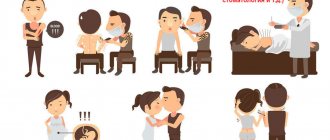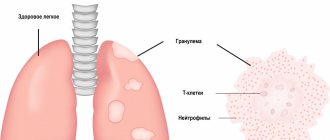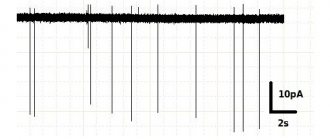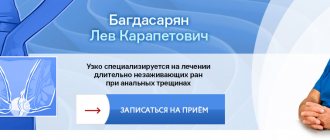Logoneurosis is a speech disorder that is manifested by repetition of the same words, utterance of individual sounds, conversational pauses and interrupted speech. Logoneurosis according to ICD-10 has code F98.5 - this is stuttering/stammering. Logoneurosis and stuttering are synonymous concepts, but to understand the difference between them, it is worth paying attention to the causes of stuttering. If stuttering is neurotic in nature, then it is logoneurosis. In addition, there is also neurosis-like or organic stuttering associated with physiological reasons. Below we will talk specifically about neurotic stuttering. Logoneurosis prevents a person from living fully, so you need to start fighting it in childhood and as early as possible. The earlier a violation is identified, the easier it is to correct it and the fewer associated problems there are (self-doubt, low self-esteem, anxiety, fear of speaking - logophobia). Before you begin speech correction, you need to identify the causes of logoneurosis. According to statistics, logoneurosis appears in preschool age. Boys are three times more likely to stutter than girls. If logoneurosis is not cured, the person will continue to stutter into adulthood.
1.General information
Stuttering, or logoneurosis, is one of the most common and, at the same time, complex problems, which specialists of various profiles - from teachers to neurosurgeons - are forced to deal with.
According to various estimates, among children, stuttering occurs in 8-10% of the general population, although this speech disorder can occur not only in childhood, but also at any other age, regardless of gender, place of residence, race and nationality. However, there is still a reliable and close connection with gender: boys suffer about three times more often, and it is more difficult to treat logoneurosis in them.
The periods when the developing central nervous system and, in particular, its speech functions are most vulnerable to disorganizing influences cover the age intervals from 2 to 4 and from 5 to 7 years, when the child receives (and must process, assimilate, remember) a huge amount of new information for him.
A must read! Help with treatment and hospitalization!
Therapy for children
Several effective methods and methods for getting rid of logoneurosis have now been developed. Usually they are used in conjunction with each other. The therapy itself is carried out in group or individual form. The main condition is that any treatment should be based on the individual characteristics of a particular child, taking into account all the physiological characteristics of the patient as much as possible.
If the origin of stuttering is due to a nervous disorder, medication may be required. However, most children manage without the use of special medications. If the reasons for the development of logoneurosis are psychological, the participation of psychotherapists and neurologists will be required.
Speech therapy correction
The work of a speech therapist in getting rid of stuttering is called correction, not treatment. The process itself consists of various elements, such as pedagogical influences on the child, comprehensive rehabilitation. Classes with speech therapists should be part of this complex work, requiring special patience, perseverance, and work. The classes themselves are structured individually and must correspond to the diagnosis and other personal differences of the patient - his age, etiology, degree of stuttering, and others.
If we talk about activities with the baby, they should have a playful form. As you grow older, you may begin to engage in more complex activities that have different, higher effectiveness. Specialists Vlasova and Rau have created a system of sequential exercises that gradually become more complex as you progress and obtain certain results.
Components of this system:
- At the first stage, the learned words, phrases, and poems are pronounced, and the technique of reflected speech is used.
- The second stage of correction of logoneurosis or stuttering includes the child having to independently describe the picture. Guided questions from an adult can help.
- The third stage involves consolidating the acquired skills in your everyday life.
For a school-age child, there are other ways. For such children, lessons and sessions with a speech therapist play a major role. The main emphasis is on overcoming the defect, and it is important to instill in the child the importance of independent learning. To obtain this effect, the Cheveleva method is used. In this method, the child makes crafts with his own hands, while voicing all his movements and manipulations.
There is also the Yastrebova method, which includes three stages of correction:
- the first stage is to study knowledge of linguistic speech;
- the second is the activation of skills;
- third – consolidation of acquired knowledge and speech skills.
There is another method that has proven its effectiveness, developed by specialists - Abeleva, Golubeva, Evgenova and others. They created a technique that can be used by children and adults. This type of correction consists of hypnosis, various relaxation techniques and other techniques.
The correction program from Harutyunyan is designed to overcome stuttering by working with fingers, that is, developing fine motor skills of the hands. These movements are synchronized with speech, affecting its rhythm. The classes themselves are conducted in small groups, no more than five people. The leading hand is on the thigh, and the fingers should press on the leg itself. Every syllable spoken, the finger should stop pressing. Thus, gradually the hands become a regulator of the speed of speech. This technique consists of four successive steps:
- the child must learn to relax, relieving muscle tension;
- learn to move your fingers correctly;
- training in pronunciation of words and individual phrases;
- working with texts and books.
One of the main disadvantages of the technique is the lack of a psychotherapeutic element in getting rid of stuttering. Treatment of logoneurosis in children does not have a clearly defined method, since each individual case must be examined separately, and the consequences of logoneurosis themselves can be observed throughout the rest of their lives.
Treatment methods for stuttering in children
There are a variety of methods of correctional work, the choice of which remains with specialists - speech therapists, neurologists, psychotherapists and others. Choosing a treatment approach on your own, without contacting medical professionals, is strictly prohibited. As soon as the first manifestations of logoneurosis are detected, parents should immediately seek help.
There are general recommendations that apply to various logoneuroses:
- provide the child with maximum peace of mind, eliminating stressful situations;
- if ridicule is observed from his peers, visiting such child care institutions must be stopped;
- it is advisable to limit the reception of guests;
- It is recommended to change the environment for the child, for example, go on vacation with him;
- physical activity will be useful;
- adherence to daily routine;
For adults, it is recommended to attend thematic seminars or workshops dedicated to the treatment of stuttering. As well as home exercises to improve diction, reading tongue twisters and special rhymes aimed at automating the pronunciation of sounds.
Breathing exercises
The exercises and techniques themselves are selected individually, based on medical history, symptoms, course characteristics and other differences. Initially, they are carried out under the supervision of a specialist, then they can be performed together with parents at home. Treatment of logoneurosis in children using breathing exercises is performed using three methods:
- static – a set of exercises aimed at general calming of the nervous system;
- dynamic – aimed at teaching proper rhythmic breathing while moving and talking;
- special – should only be carried out by specialists since a specialized tool is used for this.
All three methods can be used to treat stuttering or logoneurosis. The child must learn to control his breathing while talking. There are other methods that also have a positive effect on the patient. There are general recommendations from specialists for carrying out such exercises, which can be performed even independently, but under the supervision of adults.
Before starting classes, it is better to ventilate the room. You should not exercise after eating. The clothing of a child or adult should not be tight and put pressure on the chest or interfere with the patient in any way.
The breathing exercises technique itself looks like this:
- inhalation is done through the nose, exhalation through the mouth;
- there should be no break between these actions;
- Do not do exercises with diligence;
- as you exhale, a few words are pronounced – about 3-4;
- semantic pauses should be placed in long sentences;
Breathing should not be interrupted, it should be smooth, even and calm. The muscles should be relaxed. One of the main requirements is that you cannot move your shoulders.
Acupressure
Treatment of logoneurosis in adults and children can also be carried out using acupressure. It does not have to be carried out in an outpatient setting; it can be done on your own. Only the first lessons conducted by a professional will be enough.
The ban on homework applies only if there are any accompanying diagnoses and symptoms or there is strong muscle tone, which is impossible or extremely difficult to cope with on your own.
Computerized speech correction programs
There are various programs that can relieve stuttering in adults and children. They affect the speech and hearing centers of the brain. These classes are conducted using a microphone and headphones. The child pronounces the required phrases and hears them himself, but in a modified form.
Drug therapy
Stuttering or logoneurosis can be treated or its manifestations can be reduced in some cases with medications. They should be prescribed exclusively by a specialist; self-medication in this matter is strictly prohibited. Sedatives or sedatives are often used. They relieve nervous tension, relax muscles, relieve anxiety, and minimize the psychological factor from logoneurosis.
It is better to use mild sedatives made from medicinal herbs such as valerian, lemon balm, motherwort and others. Psychostimulants may be prescribed. They increase activity and add vigor. To achieve better results, a specialist may prescribe certain antipsychotic medications. They affect the transmission of impulses between nerve cells. Nootropics have a good effect on brain activity and improve memory.
Emotionally figurative therapy for logoneurosis
This method of treatment has appeared recently, allowing the correction of mental disorders and logoneuroses. This technique has especially proven its effectiveness for various psychosomatic disorders. It appeared in our country in the 90s.
For stuttering, imagery therapy is effective in eliminating manifestations of nervousness in a child. A significant part of logoneuroses is associated with psychosomatics, therefore, treatment with this method shows sufficient effectiveness.
2. Reasons
The role of socio-psychological factors in the development of stuttering is well known and obvious. Such factors include situations of acute and chronic distress, psychotrauma, experienced states of shock (after which speech may be completely lost for some time, recovering with stuttering), socio-pedagogical neglect, unhealthy microclimate in the family, inflated levels of expectations and requirements for child, lack of attention and communication, unconscious and unreacted internal conflict, etc. Actually, this is why stuttering is classified as a neurotic disorder, because it is almost always based on one or another psychogenia.
However, the pathogenesis of the development of logoneurosis at the level of CNS functioning remains essentially unclear. Over the last century, a number of serious hypotheses and theories have been put forward, from psychoanalytic and behavioral to psycholinguistic and neurophysiological, but all of them, at best, are only more or less successful models that can answer some questions and do not solve the problem as a whole. Thus, until recently, the role of genetic factors was apparently underestimated (hereditary predisposition could explain, among other things, the predominance of males among those who stutter) and/or the significance of hormonal imbalance (in particular, abnormal concentrations of the neurotransmitter dopamine). To this day, it is unknown why logoneurosis occurs in such different variants and what exactly determines the clinical specificity under seemingly identical initial conditions.
It is not always possible to find a reason in the anamnesis (including in the sphere of the unconscious and repressed) that could be considered quite serious: many children and adults who have experienced more than severe psychological trauma do not show any signs of stuttering.
Electrophysiological, tomographic and other instrumental diagnostic methods also do not yet provide comprehensive information about the connections between stuttering and organic changes in the structures of the brain, in particular, Broca’s area, the functioning of which is directly associated with speech.
The situation is further complicated by the fact that stuttering often develops like a vicious vicious circle: a child with a speech disorder experiences enormous discomfort about his “inferiority” (especially if he is subjected to ridicule or other pressure), may withdraw, fall into a severe depressive state, begin to be afraid and avoid verbal communication in general, abandon all attempts and faith in the possibility of a cure; the growing intrapsychic tension, thus, according to the feedback principle, progressively aggravates logoneurosis.
Research in this area is being carried out in leading psychoneurological centers around the world, but today correction techniques (developed, for the most part, empirically) are more successful than attempts to create a consistent and fairly complete theoretical basis, which in turn would open the way to development of truly etiopathogenetic therapy.
Visit our Neurology page
The role of the family’s response to logoneurosis in a child
A special role in the treatment of stuttering is given to the child’s family and environment. Higher risks exist if the child is constantly in an environment of stress, strong emotions, or if force or psychological pressure is applied to the child.
Parents should follow some recommendations from experts:
- maintain the correct daily routine of the child;
- do not overwork him;
- create a calm atmosphere in the family;
- use a calm metered tone when communicating with the child and each other, avoiding shouting or sudden movements;
- show interest in the child;
- TV or music should not be played all day;
- It is necessary to engage in development with the child.
Whatever methods and methods of treating logoneurosis are used, they may not have any result if these requirements are not met in the family.
3. Symptoms and diagnosis
As stated above, there are different variations of stuttering that are quite different from each other. In some cases, logoclonia predominates (involuntary repetition of sounds or syllables “at the start” of a phrase or word), in others the tonic component is pronounced - the need to pronounce a word causes overstrain of the facial muscles, tongue, and neck muscles.
Sometimes certain sounds are involuntarily stretched out (as if sung), or the patient cannot pronounce certain phonemes, while other combinations of sounds are verbalized without difficulty. Often, stuttering appears only in certain situations, and in a more comfortable environment for the patient it disappears without a trace.
There are four phases in the progression of logoneurosis: from preschool to “adult”, at the onset of which a stuttering person, as a rule, develops his own techniques for “smoothing out” or “masking” stuttering, gets used to almost automatically replacing words or sounds that are inaccessible to him with more convenient synonyms; in general, comes to terms with the presence of the disorder, more or less adapts and learns to live with it, as well as with a deeply rooted inferiority complex, fear and avoidance of communication, anxiety-depressive syndrome and other mental disorders, sometimes much more severe and pronounced than the primary stuttering.
However, under favorable conditions, correct parental behavior tactics, and a friendly attitude from the microsocial environment, in many cases there is a tendency toward a gradual reduction of stuttering. Complete elimination of speech disorder is observed in 50-80% of cases.
Diagnostics may require the involvement of specialized specialists - first of all, to identify or exclude a pathological organic background (residual consequences of birth trauma, latent neuroinfections, tumors, etc.), as well as to assess the general psychological state, constitutional personality type and other factors, important in terms of future treatment.
About our clinic Chistye Prudy metro station Medintercom page!
Where to go for treatment of logoneurosis?
Throughout the entire existence of the Ember center, our specialists have successfully relieved their clients (adults and children) from logoneurosis. Correction of logoneurosis should be carried out by competent specialists. Contact our center and our specialists will save you or your loved ones from logoneurosis forever. If necessary, classes can be held at home, in an environment that is comfortable and familiar to the client.
Make an initial appointment for the correction of logoneurosis by phone or fill out the application form on the website.
4.Treatment
Currently, there are many effective methods for treating stuttering. The primary task is to normalize the attitude towards the disorder and develop a constructive, cooperative position in the patient himself, as well as in his immediate family. It is equally important to examine and, if necessary, adjust the system of intrafamily relations. Various psychotherapeutic techniques of relaxation, distraction, coping (overcoming) fears and mental blocks, teaching autosuggestive techniques, and desensitization are used. Systems of special speech therapy gymnastics, massage, and breathing have been developed. Sometimes drug support is used (tranquilizers, antispasmodics, antidepressants), in other cases it is not indicated and is inappropriate.
If an organic pathology of the central nervous system is detected, a course of adequate neurological treatment or neurosurgical intervention is prescribed (as indicated).
Today, in most cases, it is possible to achieve a complete cure or at least a radical reduction of logoneurotic symptoms. It is very important to seek help at the initial stage, at the first signs of disturbances in rhythm and fluency of speech, when the disorder has not yet acquired the character of stagnant fixation with a lot of secondary psychological consequences.
Symptoms of logoneurosis
Pauses in speech, or frequent repetitions of sounds, spasms of the larynx, lips, tongue, convulsions, blinking, lack of air, “grimaces,” sweating. These are all symptoms of stuttering. At the psychological level, a constant feeling of anxiety, fear, fear of getting into trouble, feelings of inferiority, insomnia, and lack of appetite are added.
Symptoms appear progressively. At first these are episodic facts, then periodically occurring, and then stable repetitions. The situation is aggravated during periods of nervous excitement.
Fighting stuttering at home
Most classes can be done at home. Some exercises, especially their first lessons, are carried out together with a specialist. Subsequent ones, when their mechanism is clear, you can do them on your own. The only exceptions are those that require special equipment, tools and other items. It is also an exception to have complex diagnoses that are caused by disorders in the nervous system or require the help of a psychotherapist.
Self-help techniques
Shows the positive effect of auto-training. Such exercises consist of practicing in front of a mirror to see your own facial expressions. They take about an hour and do not require much effort from the patient.
The main requirement is to maintain a calm, measured bottom pattern, have long, healthy sleep, give up bad habits, and not be stressed.








